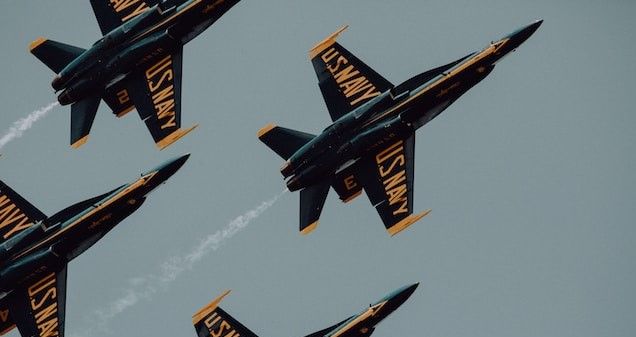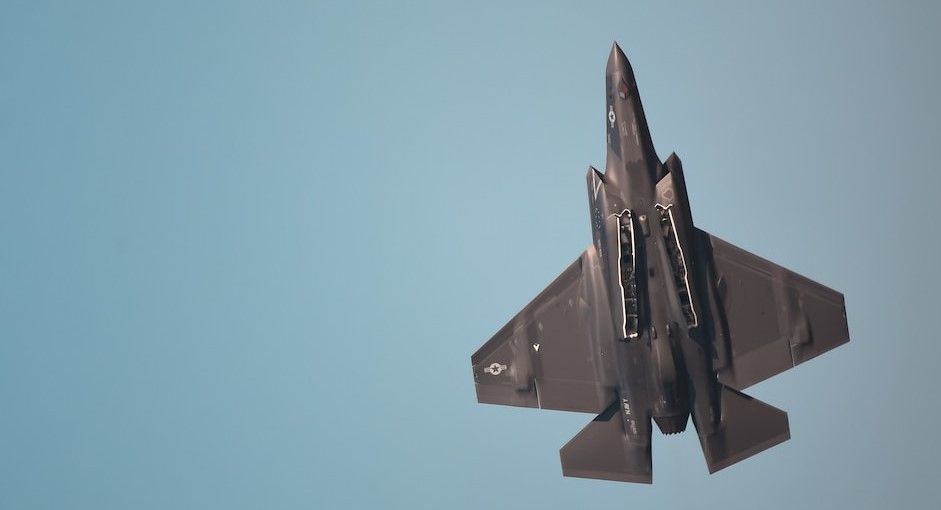Collaborative Combat Aircraft: How Uncrewed Drones Will Fight
The US military is researching drone capabilities without knowing where it will lead.

The US military has an air superiority problem which it hopes to fix with uncrewed aircraft.
Since the Second World War, America has been able to fight wars anywhere in the world with complete dominance of the air space. As China continues to expand its air force, there are fears that America may not have air superiority over, for example, the South China Sea.
It is a problem that comes down to money.

Currently, the U.S. Air Force has an aging fleet of F-15s – planes that will be largely obsolete by the end of the decade. To replace them, designers have built the cutting-edge F-35, a plane which can win a dogfight against any aircraft in the world. But the F-35 is very, very expensive.
A Lockheed spokesperson explained in January that current prices, “For the airframe and mission equipment only, F-35s ranges from $70 million … for the F-35A [conventional take-off and landing], $80.9 million to $78.3 million for the F-35B [vertical take-off and landing] and $90 million for the F-35C [carrier-based version]”.
With the US military buying about 130 aircraft every year, the last bill came in at $30 billion. Consequently, as older craft are retired, fewer and fewer planes are replacing them. Current plans are for 801 fighters to be moth-balled by 2028 with only 345 upgraded planes to replace them.

Drones are the most cost-effective way to maintain air superiority without breaking the budget, with U.S. military planners looking to build a fleet of 1,000 uncrewed collaborative combat aircraft or CCAs.
“We have to come up with a way to create affordable mass, and that’s where CCAs came in,” said Lt. Gen. Richard Moore, deputy chief of staff for plans and programs. “You can’t just talk about F-35s, and F-15Es, and F-15EXs and F-16s, and call that the enterprise. You have to add CCAs in.”
However, the exact number and role of CCAs has yet to be established, as no one yet knows what a CCA is capable of.
When creating next-generation military hardware, the U.S. Air Force typically outlines to industry what they want built or designed. For example, they may ask for a sea plane with a 50,000-kilo payload and a range of 2,000 km that costs less than $10 million.
This time, however, the Air Force decided to ask the industry to find out what could drones feasibly achieve rather than laying out requirements. Additionally, the Experimental Operations Unit will take far more ideas from the business sector than usual, and then further investigate drone concepts to determine how they could be used to help the military.

This research and development program will be conducted under the $50 million Project Venom, which aims to refine autonomous software of the kind that could fly CCAs (drones), plus a further $69 million for an Experimental Operations Unit which would look into how CCAs would be integrated into a squadron, what tactics would be used, and how they would be deployed.
At present, the plan is for CCAs to synchronise with crewed aircraft in either a reconnaissance or combat role. For this reason, military planners are estimating that they would need six hundred CCAs to accompany the U.S. Air Force’s 300 F-35s (in a two to one ratio), with a further four hundred CCAs to assist a planned two hundred ‘future fighters’ that are still being designed (so called Next Generation Air Dominance or NGAD). Thus, giving the 1,000 CCA total figure.
But until the first prototypes have been tested, it is not yet known how autonomous CCAs will be.

“If they’re truly autonomous,” says Moore, “then that opens up some additional possibilities. If they are somewhat autonomous, then that would lead you more to a ‘loyal wingman’ concept, or CCAs being part of a formation with manned fighters. We’ll just have to see how that plays out.”
Will these drones only be capable of a single mission type (intelligence collection, jamming, or strike force) or will one design be multi-faceted?
“The one that we’re focusing on first is the ability for CCAs to augment the manned fighter force as shooters,” adds Moore, “so that’ll be first.”
This leaves military planners with further questions. Will CCAs be based alongside crewed aircraft? Will they be able to fly alone? Will they integrate into current squadrons or form their own?
“These are questions that don’t yet have answers, because we don’t yet know the attributes of the CCA that will come,” said Moore. “We’ll work all that out as those attributes begin to crystallize. And I think the answers will become relatively obvious based on the airplanes, but we don’t have them yet.”
For now, Project Venom autonomous flight software is being installed in six F-16s for experimentation. Once those tests have been completed, a lot more will be known about what the system could be capable of. All of the biggest names in aviation manufacture and development, including Boeing, Northrop Grumman, Lockheed Martin, Kratos, and General Atomics, have come forward to assist.

“The CCAs will complement and enhance the performance of our crewed fighter force structure,” concludes Air Force Secretary Frank Kendall. “CCAs will dramatically improve the performance of our crewed aircraft, and significantly reduce the risk to our pilots.”
Thus, the stage is evolving for how air combat will be conducted in the next war. The challenge is, that like all new equipment no one knows exactly how it will operate or what exactly it will do. All that is known is that it will be different.
As Moore noted in a recent interview, “The picture here is changing and what’s changing the picture is CCAs.”
Photo credit: Jovian Kan, Wikipedia, Conner Baker on Unsplash, Tayeb MEZAHDIA from Pixabay, Open clipart vectors, & Macrovector on Freepik

